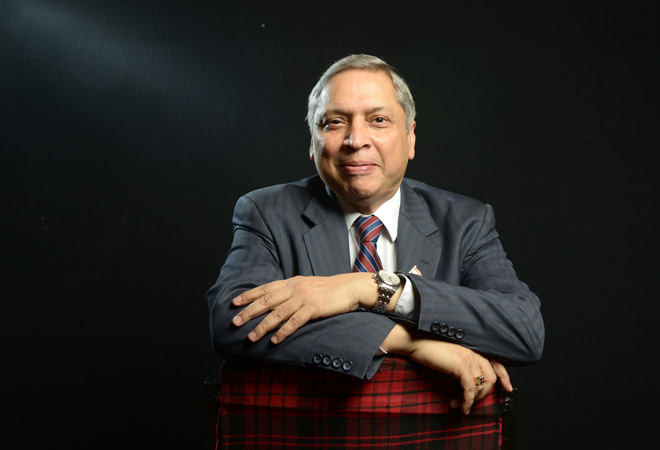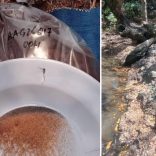Mozambique LNG: TotalEnergies takes firm steps toward lifting 'force majeure'
Watch: “We are in the process of ramping the Mozambique production” – Jindal Steel & Power CEO

Business Today (File photo) / Jindal Steel MD and CEO Ravi Uppal
In an interview to CNBC-TV18, Ravi Uppal, MD & CEO of Jindal Steel and Power Ltd (JSPL) spoke about the latest happenings in his company and sector.
“We are always looking at the various options which are in interest of our stakeholders to see how the loans can be reduced and we have the favourable debt equity ratio”, he said.
He expects the growth to go up for the steel industry because the government has put huge amount of investment in the infrastructure sector in particular.
On reducing debt, he said, “First step is to make sure that we do not add any debt and second is to reduce the debt through a gradual process”.
At the end of FY18, the debt should be reduced by about Rs 3,000 crore, he added.
Below is the verbatim transcript of the interview.
Anuj: Before we discuss business, I just wanted to discuss what is happening at JSPL in terms of fund raising and equity dilution because you have recently approved raising funds via allocation to promoters. If you could tell us whether there is further equity dilution plan and if this is a precursor to dilution to some other big player as well, some overseas player?
A: There are no plans as such of our dilution of equity. I will not like to get into any speculations. We are always looking at the various options, which are in the interest of our stakeholders to see how the loans can be reduced and we have a favourable debt equity ratio.
Latha: But you have issued these Rs 4.8 crore warrants to the promoter group on a preferential basis. When will they be able to exercise the warrants and become shares and what will it take this stake to, the promoters’ stake?
A: It is a window of about 18 months, after 18 months option can be exercised.
Latha: So when they convert what will the stake go to?
A: I cannot tell you right now, I do not have those figures with me but the amount to equity which is being offered is obviously stated publically.
Sonia: Can you tell us little bit about the sector itself because the steel consumption growth in India was hardly 3-4 percent in the last fiscal, what is the expectation as we head into the new one?
A: Calendar year 2017 has started off very well. I think for the Indian steel industry, the primary sector in particular has had their production grow between 15 percent and 17 percent and on the whole as an industry, we have grown by about 12 percent on production.
We are quite right in saying that the demand has not grown as much as one would like to see but the demand in the last financial year has grown between 3 and 3.5 percent but I am quite optimistic that the year, which is just setting in, I think the growth is going to go up because the government has put huge amount of investment in the infrastructure sector in particular. The government has planned to put Rs 350,000 crore in infrastructure, we already see signs of that happening now and I reckon that in this year if all goes well and the project gets executed as planned we should see that the industry should grow between 5.5 percent and 6 percent.
Latha: The interesting part is increase in coal prices, it is double the coking coal from USD 150 to USD 300 in April. What is your in-house output now both including Australia and Mozambique?
A: You are quite right in saying that there is huge amount of volatility in the prices of the coking coal. They first went up to a level of USD 315 in October-November and then it crashed to a level of about USD 155 and USD 160 but in the last two weeks I have seen that coking coal prices have bounced back to the level of about USD 315-320. So this is not only coal even the iron ore is also witnessing quite a lot of volatility. Tthey are gone up to the price of about USD 85-86, now it is down to USD 70 so they remain very volatile. But I think this is a kind of a new setting in which we have to learn to do business where the input material will continue to remain volatile much depends on what China intends to do. How are they going to import and they decide to a very large extent how the raw material prices will move.
Answering your second question, we produce about 100,000 tonne a month in Australia and we are currently producing about 150,000 tonnes a month in Mozambique. We are in the process of ramping the Mozambique production to double the size which means that we will go to about 3 million tonne a year in Mozambique and in Australia we should be doing between 1.2 and 1.5 million tonnes a year.
Sonia: What will all of this do to your EBITDA per tonne because it has been around this Rs 6,000 or so per tonne, there is an expectation that it could improve substantially going ahead, what is your own estimate?
A: I do not know, you are asking about us or the industry?
Sonia: About you.
A: I do not think I am in a position to give you any numbers because we are bound by the rules and we are soon going to have our board meeting towards the end of April. But I would say that the numbers that we had in Q3, they were not 6,000, we were at a level of about Rs 8,100 per tonne and it will remain our endeavour to see we continue to improve from that EBITDA levels.
Latha: So FY18 your EBITDA could be higher than this Q3 number?
A: We are working towards it.
Anuj: Let us talk about the power business now, how is that looking up? Would you see improvement in generation, profitability this year in FY18?
A: I think JSPL has done well in Q3. We have made sure that our operational efficiency helps us to improve our EBITDA. The EBITDA in Q3 is around 35 percent. We are seeing better generation this year. The summer has started early, the load has picked up for the industry as a whole, the exchange rates have gone better than the same time last year. So EBITDA remains to be seen how things pan out in the days and weeks to come.
Latha: What is your conversation with the banks leading to, are you getting some relief either through a 5:25 or an Scheme for Sustainable Structuring of Stressed Assets (S4A), will your interest outgo in FY18 be any different from that in FY17?
A: We have managed our debts quite well. We have managed to service all our dues as well as interest payments very regularly. I think the company seems to be doing better as in the weeks to come, our earnings improve, we would be able to do it even more efficiently.
The effort remains as we mentioned in the past, how to reduce the debt. The first step is to make sure that we do not add any debt, the second is how we can reduce the debt through a gradual process. That is what we are constantly working on.
Latha: Give us some numbers, what will the debt look like at the end of FY18 at least a target?
A: We should reduce by about Rs 3,000 crore.
Anuj: No plan to revisit initial public offering (IPO) for Jindal Power? That was a big issue some years back, now because the market has also revived – the IPO market, I am sure you would have seen the kind of response that the primary market is getting now, any plans to revive IPO?
A: Nothing, there is always a right time for one to go with the IPO. We do not believe this is the right time. What we are focused on right now is to improve the operation efficiency of JPL. We still are running the plant only at 50 percent. This is something that we need to improve. I just hope that the demand should pick up because our plant is up and ready, it is operating very efficiently. We would like to see that we take it up to the level of about 80-85 percent of its capacity. It has started to do better, compared to the previous quarter, it is inching up and we are optimistic that the current financial year we should be able to see a better utilisation of the 3,500 megawatt plant.
Latha: So 1,800 megawatt, what should we expect?
A: We are running the plant right now at about 1,750 to 2,200 megawatt. So right now the plant is running fine. So let us just hope that it continues and gets even better than what we are doing right now.













Leave a Reply
Be the First to Comment!
You must be logged in to post a comment.
You must be logged in to post a comment.